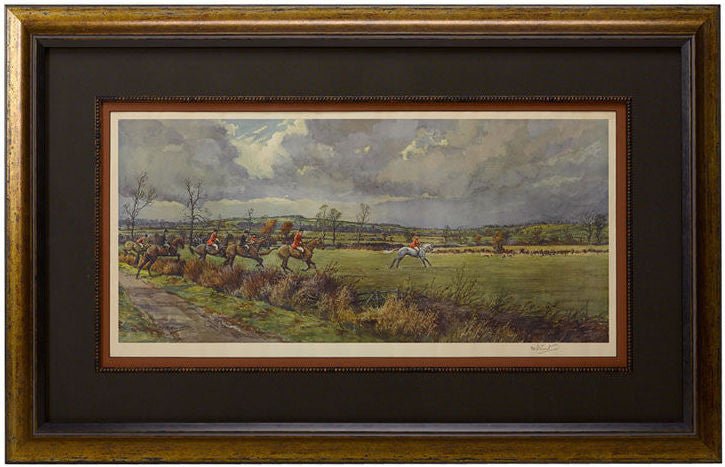
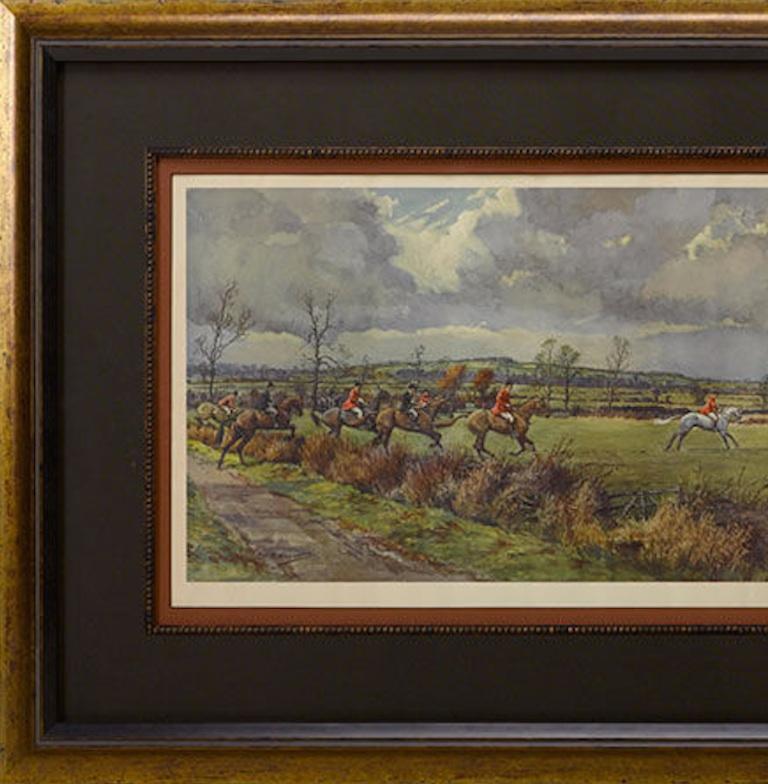
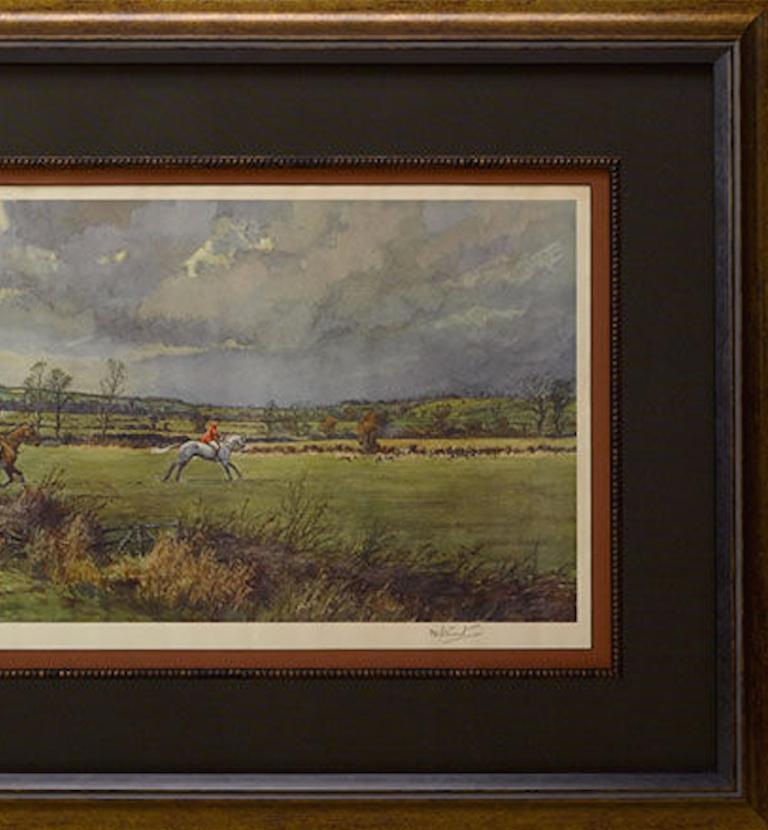
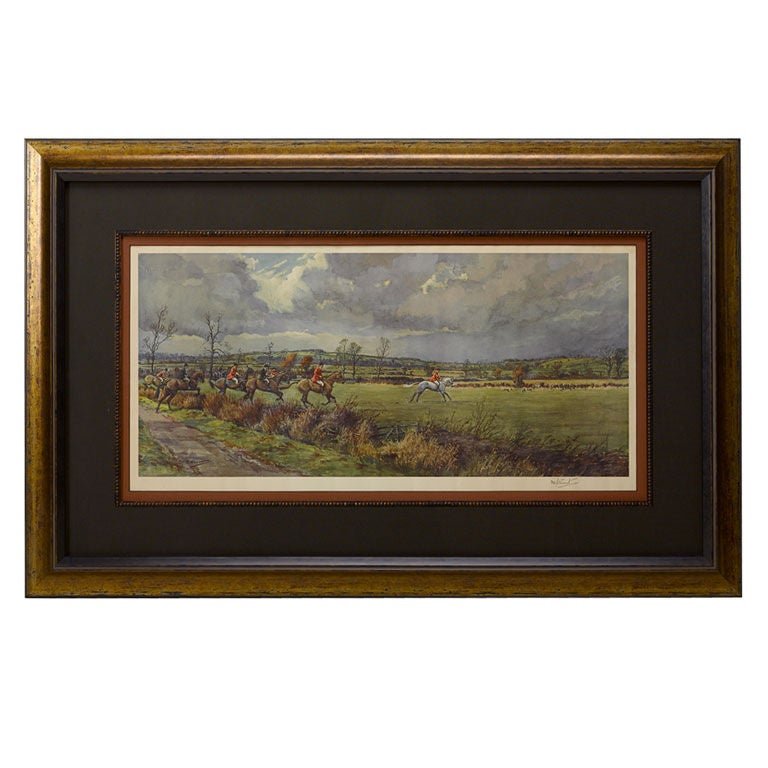
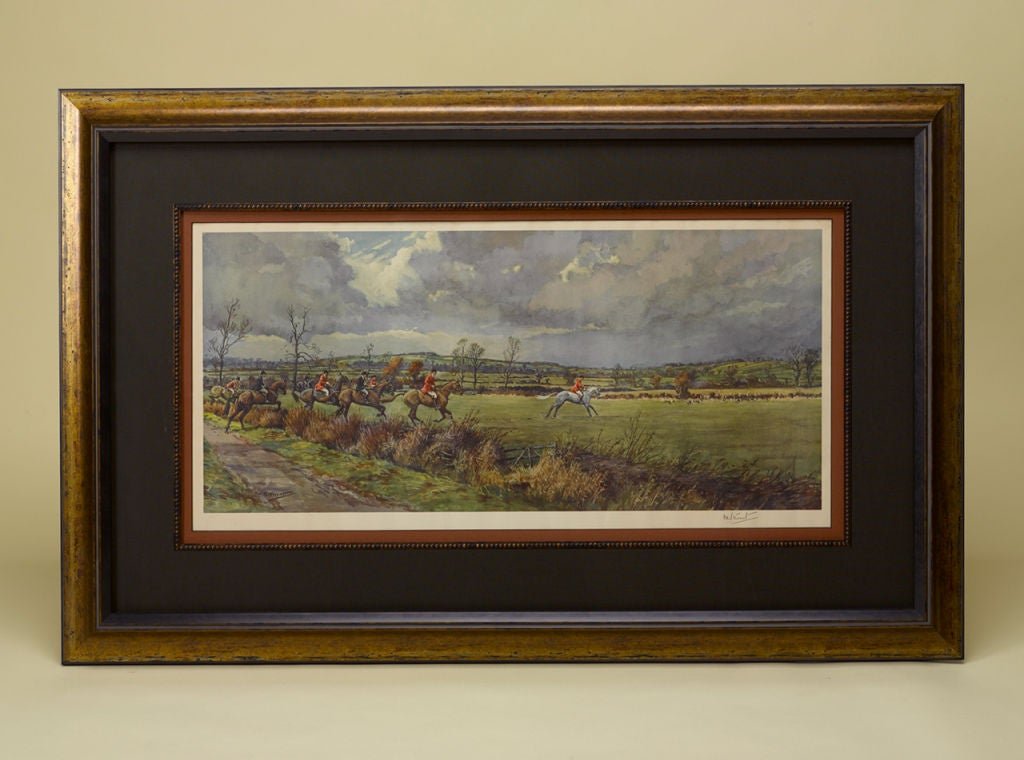
The Bicester & Warden Hill Fox Hunting Print, Signed by Frank Algernon Stewart, Circa 1935
Presented is an original fox hunting print signed by the artist, Frank Algernon Stewart (1877-1945). This print depicts one of England’s most famous fox hunting events, the Bicester and Warden Hill Hunt. The scene depicts six men on horseback galloping across a field in mid-hunt. All coloring is still intact, with lush green fields and bright riders’ jackets. As evidenced here, Stewart’s renderings of horseback hunts are some of the most celebrated and collected in the world.
The beginnings of the Bicester Hunt started around the 1790s when John Warde Esq. bought a set of hounds and hunted in the Bicester area, with the main kennels located at Bainton. He hunted for 18 seasons. The first master of the Bicester Hunt was Sir Thomas Mostyn in 1800. Mostyn had a vast fortune, which he duly ploughed into the Bicester Hunt. He purchased Swift’s House which he converted from an inn to a house and built stables and kennels. Thomas Tyrwhitt-Drake succeeded Sir Thomas Mostyn as master of the Hunt from 1829-1851, and the vast area then associated with the hunt stretched to Daventry, to Buckingham, and to Oxford. In 1855, new quarters were built in Stratton Audley. From then on, Stratton Audley began its strong association with the Bicester Hunt.
By the 1870s, the Bicester Hunt was attracting high society, with frequent visits from royalty, dukes, ambassadors, and aristocrats. This patronage continued over many succeeding years. Local dignitaries gave support to the Bicester Hunt, including the 4th Earl of Cottenham and 8th Earl of Jersey.
In the early 1900s, there were many hunt-related activities in the area, such as point to point and steeple chasing. People came to Bicester for the season, seeking hunting boxes and accommodation. The hunt went to Blockley in 1906, and Cropredy and Helidon in 1910. Special trains were put on to transport participants, staff, and horses. Big houses were used as meeting points and hosted extravagant hunt-related social events.
After WWI, the Bicester hunting scene carried on much as it had done in the previous century, with annual meetings at Market Square, hunt balls, big houses, and patronage of local dignitaries. Hunting in Bicester was depicted on prints, ceramics, and cigarette cards. However, the war years of 1939-45 put a damper of the hunting scene, and the tradition fell to the more elderly of the population to keep things going during a period of shortages and uncertainty.
In the 1950s, there was a hunting revival attracting vast crowds, and this carried on into the 1960s. For reasons of economy of scale, hunts began to merge together, and in 1986 the Bicester and Warden Hill Hunt amalgamated with the Whaddon Chase Hunt.
CONDITION:
Overall good condition for age. Paper quality is good, with nice coloring and minimal wear. Artist’s signature at bottom. This piece has been framed according to conservation standards. Framed dimensions: 27 ½” H x 43 ¼” W.
Accompanied by our company's letter of authenticity.
Pickup available at Colorado
Usually ready in 4 hours

The Bicester & Warden Hill Fox Hunting Print, Signed by Frank Algernon Stewart, Circa 1935
Colorado
1 Lake Avenue
Colorado Springs CO 80906
United States
Choose options





Frequently Asked Questions
FAQs
Yes, all of our Antiques are certified authentic. Every antique comes with a signed Letter of Authenticity that details the item’s history, its current condition including any conservation, binding, or framing work, and the item’s provenance. The Letters of Authenticity are priced valuations by our authentication specialists, who assure that items are original and unconditionally guaranteed as genuine for life.
We pack and ship your items from our gallery in Colorado Springs. You may also choose to come pick up your order. Antique items are carefully packed and insured during shipping. The shipping price will be calculated at checkout.
We acquire from a variety of trusted sources all over the world, but mostly through auctions and private collections within the United States. All provenance information will be listed on the Letter of
Authenticity accompanying your purchase.

